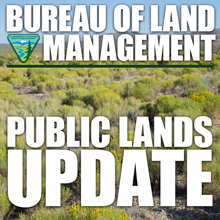
The Bureau of Land Management is taking an ambitious and coordinated approach to accelerate fuels reduction projects on public lands with high wildfire risk throughout California and northwest Nevada.
The signing of the Statewide Wildland-Urban Interface Fuels Treatment Programmatic Environmental Assessment will streamline plans to protect communities, reduce wildfire risk and improve forest health.
“This plan helps reduce the intensity, severity and spread of wildfire near communities that border public lands managed by the BLM,” said BLM California State Director Karen E. Mouritsen.
“Through partnerships with local and state agencies we will prioritize and coordinate fuels treatments to protect people, property and vital infrastructure.”
Under this plan, fuels treatment projects will be coordinated across land ownerships to provide the best results for communities, creating a landscape-level network of strategic fuels treatments and breaks within the wildland-urban interface.
The Statewide Wildland-Urban Interface Fuels Treatment Programmatic Environmental Assessment conducted a broad analysis across 930,000 acres of public lands.
As local communities and the BLM identify wildfire concerns, the new streamlined fuels treatment plans will permit on-the-ground work to begin in a matter of months. This will allow us to treat an anticipated additional 20,000 acres of public lands each year.
Along with Lassen, the plan covers 43 other counties in California: Amador, Butte, Calaveras, Colusa, El Dorado, Fresno, Glenn, Humboldt, Imperial, Inyo, Kern, Lake, Los Angeles, Madera, Mariposa, Mendocino, Modoc, Mono, Monterey, Napa, Nevada, Placer, Plumas, Riverside, Sacramento, San Benito, San Bernardino, San Diego, San Joaquin, Santa Clara, Santa Cruz, Shasta, Sierra, Siskiyou, Solano, Sonoma, Stanislaus, Tehama, Trinity, Tulare, Tuolumne, Yolo, and Yuba; and two counties in northwest Nevada: Douglas and Washoe.
Projects under this program can begin as soon as this fall.
To learn more about this programmatic environmental assessment, visit the BLM NEPA Register. For more general information, please contact your local BLM Field Office.






